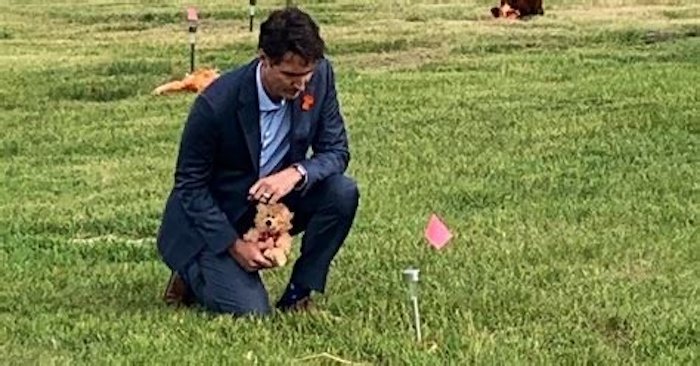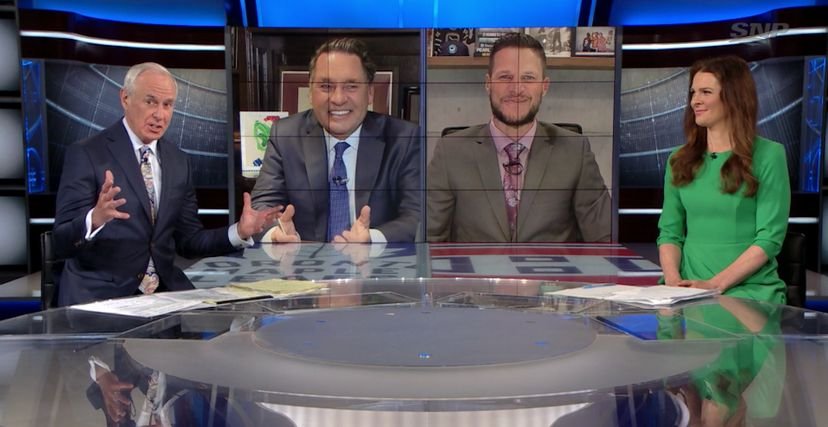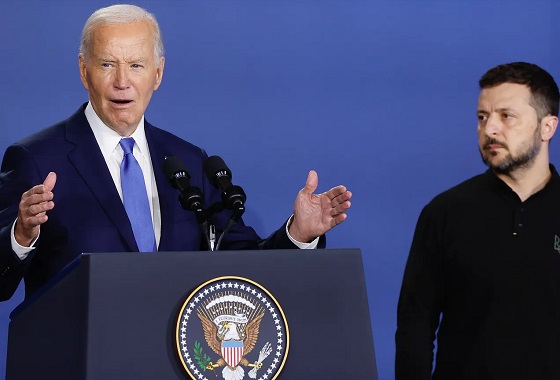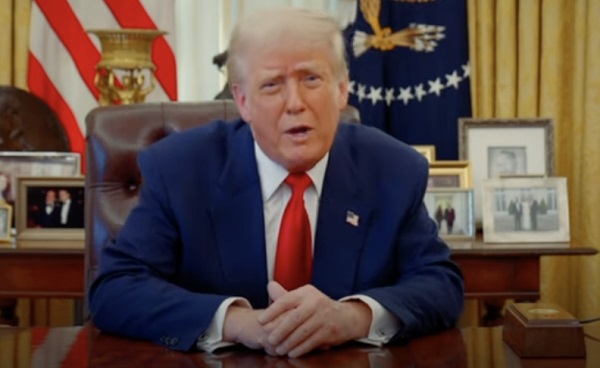Bruce Dowbiggin
Grave Mistake: Blame The Trudeaus, Not Sir John A.

Pop Quiz: Since the 2021 Residential schools “secret burials” hysteria allowed prime minister Justin Trudeau to declare Canada a genocidal state, how many of the graves in question have been exhumed? Examined, even, to judge the merits of the wild claims?
The answer to that would appear to be zero. Because they know what will be found. “There is no recorded case of any indigenous parent claiming that their child had disappeared after being enrolled in a residential school. Not one police report, or historical records, of any of these tales from the crypt ever occurring,” writes Brian Giesbrecht.
Which didn’t prevent Trudeau’s grotesque teddy-bear photo op in a former residential cemetery. Nor his lowering of the Canadian flag for months to draw attention to murders and abuse he has never proved—or even bothered to prove. Nor his libelling the nation he leads before the world community. (Nor firing the first Indigenous Justice Minister, Jodie Wilson Raybould, for trying to protect justice from the political needs of the PMO.)
While the federal government, in a spasm of settler guilt, set aside $320 million to indigenous nations to find more evidence of a horrific crime, the dead remain undisturbed in their graves. If only we could say the same for the truth over allegations that went across the globe about the church-run residential schools.
These “truths” are behind the recent hounding of former Mount Royal University professor Frances Widdowson at University of Lethbridge over her claims that most, in not all, the allegations of priests murdering residential kids or being used for sado-masochistic purposes had no basis in fact. Widdowson lost her job for questioning the Trudeau catechism of white guilt on the Prairies.
Widdowson is one of the people Indigenous Affairs Minister Marc Miller described as “ghouls” for pointing out that residential school indigenous children died of the diseases of the day— in particular tuberculosis. Even more children were dying of TB on the reserves where they came from. (As we pointed out here ) If residential schools had never existed these children would, sadly, still have died.
Widdowson is in good company. In the white-guilt frenzy unleashed by Trudeau many of the founding figures of the nation have been denounced, their statues toppled, their names removed from schools. None worse than Sir John A, Macdonald, the first prime minister of the nation. While radicals doused his image in fake blood, it is an uncomfortable truth that, had Macdonald not been a visionary about the nation and its Indian tribes, the Plains Indians would not exist today.

Prime Minister Justin Trudeau, left, poses for a selfie with an elder after receiving a ceremonial headdress while visiting the Tsuut’ina First Nation near Calgary, Alta., Friday, March 4, 2016.THE CANADIAN PRESS/Jeff McIntosh
In a time of economic frugality Macdonald’s government paid the entire cost of inoculating the Plains population for TB, against which they had no immunity. It is no exaggeration to say that were it not for this policy there would be few or no Indigenous Plains peoples for Trudeau to use as political props.
As Giesbrecht explains here Macdonald was instrumental on a number of fronts that saved the population.“Canada’s Indians escaped the bloody fate of the American Indians and their Trail of Tears,” writes Giesbrecht. “Macdonald was justly proud of this accomplishment.”
While the U.S. Seventh Cavalry was hunting down its native population on horseback, Macdonald was concluding treaties that ended the bloody inter-tribe wars between Plains Indians in the West. He tossed the rotgut whiskey purveyors exploiting Indians south of the border. That guaranteed the natives safety from U.S. imperialism by extending the railway from coast to coast, installing the Crown, not Washington, as their partner in treaties. He also saved them from the starvation brought on from the extinction of the buffalo herds.
Most of all, Macdonald saw education, not genocide, as the saviour of natives in Canada. When the concept of building conventional day schools for them failed he proposed the idea of boarding schools where native children could be educated and, hopefully, become Christian. As Giesbrecht notes, “providing education to Indian children was a treaty obligation demanded by the Indians chiefs, and gratefully granted by the federal government. The numbered treaties included provisions that schools would be built on reserves if requested, and all of the chiefs made that request.”
Further, attendance at the schools was voluntary until about 1920. Under Macdonald parents had to agree to send their children. The government would accept the full cost of the program and the treatments of disease that so many of the children brought with them to the schools. For this and many other policies towards Indians the population of the Plains nations has increased at least tenfold since his time.

But Macdonald’s statue at Queens Park in Toronto must be boarded up to protect it from the radicals stoked by Trudeau’s alleged infamy.
Sadly, another pioneer of education in Canada was not so fortunate. Egerton Ryerson’s name was stricken from the eponymous university when the Reign of Error thugs decided that his participation in starting free live-in education for natives was tantamount to genocide. Despite the fact this proponent of free education for all died before residential schools were in practice, his statue in Toronto was toppled. Whatever happened at the schools after his death in 1884 cannot diminish his desire to educate the native peoples of Ontario and establish universal access to education in Canada.
Guess which Canadian political leader is not having his statue toppled, his likeness removed from schools and his reputation sullied? That would be Justin’s daddy Pierre Trudeau. As PM in 1968 he proposed in a white paper to eliminate native status and turn indigenous people into ordinary Canadians, thereby abrogating all the treaties they’d signed in good faith with the Crown.

With his fellow Liberal cabinet member (and later PM) Jean Chretien, Pierre Trudeau set back native rights by advocating for assimilation when what native leaders wanted was self government under the treaties they’d signed with the Crown. When forced to finally withdraw the white paper, PET petulantly said, “We’ll keep them in the ghetto as long as they want.” In 1973, the Canadian Supreme Court validated those treaties.
Oh, from 1969 until 1978, control and maintenance of residential schools was in the hands the federal government of Canada. The Liberal Party prime minister throughout this eleven-year period ? Pierre Trudeau. Funnily, his son has not made an issue of his father’s role in the bureaucratic mess by calling him a genocidal leader.” Wonder why?
Sign up today for Not The Public Broadcaster newsletters. Hot takes/ cool slants on sports and current affairs. Have the latest columns delivered to your mail box. Tell your friends to join, too. Always provocative, always independent. https://share.hsforms.com/16edbhhC3TTKg6jAaRyP7rActsj5
Bruce Dowbiggin @dowbboy is the editor of Not The Public Broadcaster A two-time winner of the Gemini Award as Canada’s top television sports broadcaster, he’s a regular contributor to Sirius XM Canada Talks Ch. 167. Inexact Science: The Six Most Compelling Draft Years In NHL History, his new book with his son Evan, was voted the seventh-best professional hockey book of all time by bookauthority.org . His 2004 book Money Players was voted sixth best on the same list, and is available via http://brucedowbigginbooks.ca/book-personalaccount.aspx
Bruce Dowbiggin
Bettman Gives Rogers Keys To The Empire. Nothing Will Change

Good news if you like the way Rogers Sportsnet covers hockey in Canada. You’re about to get a whole lot more of it. In a move that sums up Gary Bettman’s unique broadcast philosophy the NHL has awarded the Canadian TV/ digital/ streaming rights to Rogers for the next 12 years. The price tag? 12 billion U.S. dollars (about $16.B CDN dollars).
While the pattern in modern sports broadcasting rights has been toward sharing the wealth among competing bidders— the NFL has six distinct partners— Bettman the contrarian has opted for a different notion. He’s all in with one Canadian partner, and let his critics STFU.
As opposed to the previous CDN national monopoly awarded to Rogers in 2013 this one bestows national rights in all languages across TV, streaming and digital for all regular-season and playoff games, plus the Stanley Cup Final and all special events. This extends to coverage in all regions. There are some concessions for Rogers to sell limited cutout packages, such as the Monday Night Amazon package they’ve created.
Presuming Pierre Poliievre doesn’t get his way with CBC, Rogers will likely piggyback on their time-sharing agreement for Saturday Hockey Night In Canada to get CBC’s network reach. (There remain many hockey fans who still think CBC has the NHL contract. Go figure.)
Translation: there will be no regional packages for TSN to produce Montreal Canadiens, Ottawa Senators or Toronto Maple Leafs games, for instance. But there will be regional blackouts, because nothing says we are proud of our product like denying it to a larger audience. Conn Smythe would be proud.
At the presser to announce the deal Rogers and Bettman were coy about how much they will charge consumers for the honour of being inundated by content in what now seems likely to be a 36-team league by the time the deal expires. Will costs be added to cable/ satellite packages? How much for streaming? With stories circulating that Rogers massively overbid for the package to get the monopoly it’s apparent that the phone company will be turning over every nickel to make it worthwhile.
Fans are apprehensive and over-saturated with hockey content already. For that reason, the NHL is now desperately looking for ways to lessen the tedium of the 82-game regular schedule with midseason content like the 4 Nations Cup or a World Cup format. In Canada’s hockey-mad environment Rogers will have a passionate market, but even the most fervent fans will only spend so much for their fix.
Already, Rogers is trumpeting its re-acquisition with commercials featuring Ron Maclean doing his breathy feels-like-home voice about how Sportsnet is the natural landing spot for hockey until many of us are dead. Bettman made cooing noises about Rogers’ commitment at the announcement.
But let us cast our minds back to 2013 when the last Rogers/ NHL deal was concocted. We were the sports media columnist at the Mop & Pail at the time and much was made that Rogers would be a technological marvel, re-inventing the way we watched hockey. There would be new camera angles, referee cams, heightened audio, refreshed editorial content etc.

As hockey fans now know Rogers dabbled in the brave new world briefly, blanched at the cost of being creative and largely went back to doing hockey the way it had always been done. Taking no risks. On some regional casts that meant as few as three or four cameras for the action.
But if you were expecting dashboard cameras and drone shots you were sadly disappointed. Similarly there was a brief stab at refreshing the pre-, mid- and postgame content. Hipster George Stromboulopoulos was brought in as a host to attract a larger female audience.
But pretty soon Strombo was gonzo, replaced by the anodyne David Amber (whose dad was once the leader of the journalist union at CBC). Women like former player Jennifer Botterill were brought in to change the gender balance on panels. They then acted pretty much like guys, chalk-talking viewers into numbness. Appointment viewing has become a fallback choice.
The move away for anything controversial came in 2019 with Rogers’ axing of Don Cherry’s Coach’s Corner in a flap over the former coach’s continuing ventures into political or cultural content. Maclean slipped the knife into his meal ticket and continued on the show. After time in limbo, doing location shoots, he was returned full-time to the desk.

As we wrote in June of 2022, the one exception to the standard “serious, sombre, even a touch grim” tone is former defenceman Kevin Bieksa. “Bieksa has been a moveable feast. His insouciance with media has become his ragging on the fellow panelists during intermissions that used to be as much fun as skating in July.” His banter with “insider” Elliotte Friedman is now a lone concession to wit on the show.
Intermissions are numbingly predictable, and Rogers’ stable of analysts and play-by-play announcers outside of HNIC is unchallenging to the orthodoxy of PxP being a radio call over TV pictures. Name one star beside Bieksa that has been produced by Rogers’ “safe” broadcast style since 2013. They’d fit in perfectly in a 1980s hockey broadcast. Now compare it with the lively Amazon broadcasts hosted by Adnan Virk and Andi Petrillo.
This leaves a lingering question. What happens to TSN? Many prefer the editorial and studio profile of TSN on Trade Deadline Day or Free Agent frenzy. TSN locked up its stars such as James Duthie and Bob McKenzie when the last deal was signed. But there isn’t enough live content this time to support keeping a full roster anymore. Who will stay and who will go? (TSN’s president Stewart Johnson is the new commissioner of the CFL).
And with Rogers taking full control of MLSE (Maple Leafs, Raptors, Argos, Toronto FC) TSN is left with the CFL and packages of NFL, golf, tennis, some auto racing and international soccer. Is that enough on which to float a network? There have been rumours that Bell, owner of TSN, is interested in divesting itself of the high cost of sports broadcasting. Should that happen— who has the money to replace them?— the effect will be seismic in Canadian broadcasting.
For now, watch how much pressure the NHL puts on Rogers to up its game. More importantly what will happen when Bettman finally retires and the league has a new vision since 1992? Rogers has sewn up its end. Will the audience go with them?
Bruce Dowbiggin @dowbboy is the editor of Not The Public Broadcaster A two-time winner of the Gemini Award as Canada’s top television sports broadcaster, his new book Deal With It: The Trades That Stunned The NHL And Changed hockey is now available on Amazon. Inexact Science: The Six Most Compelling Draft Years In NHL History, his previous book with his son Evan, was voted the seventh-best professional hockey book of all time by bookauthority.org . His 2004 book Money Players was voted sixth best on the same list, and is available via brucedowbigginbooks.ca.
2025 Federal Election
Will Four More Years Of Liberals Prove The West’s Tipping Point?

The 1997 political comedy Wag The Dog featured a ruling president far behind in the polls engaging Hollywood to rescue his failing ratings. By inventing a fake war against Albania and a left-behind “hero”— nicknamed Shoe— the Hollywood producer creates a narrative that sweeps the nation.
The meme of hanging old shoes from the branches of trees and power lines catches on and re-elects the president. In a plot kicker, the vain producer is killed by the president’s handlers when he refuses to stay quiet about his handiwork. The movie’s cynicism over political spin made it a big hit in the Bill Clinton/ Monica Lewinsky days.

In the recent 2024 election the Democrats thought they’d resurrect the WTD formula to spin off senile Joe Biden at the last minute in favour of Kamala Harris. Americans saw through the obvious charade and installed Donald Trump instead.
You’d think that would be enough to dissuade Canadians who pride themselves on their hip, postmodern humour. But you’d be wrong, they don’t get the joke. Wag The Carney is the current political theatre as Liberals bury the reviled Justin Trudeau and pivot to Mark Carney. If you believe the polling it might just be working on a public besotted by ex-pat Mike Myers and “Canada’s Not For Sale”.
As opposed to Wag The Dog, few are laughing about this performative theatre, however. There are still two debates (English/ French) and over three more weeks of campaign where anything— hello Paul Chiang—can happen. But with Laurentian media bribed by the Libs— Carney is threatening those who stray— people are already projecting what another four years of Liberals in office will mean.
As the most prominent outlier to Team Canada’s “we will fight them on the beaches…” Alberta’s premier Danielle Smith is already steering a course for her province that doesn’t include going to war with America on energy. She asked Trump to delay his tariffs until Canadians had a chance to speak on the subject in an election April 28. Naturally the howler monkeys of the Left accused her of treason. She got her wish Wednesday when Canada was spared any new tariffs for the time being.

Clearly, she (and Saskatchewan premier Scott Moe) have no illusions about Carney not using their energy industry as a whipping post for his EU climate schemes. They’ve seen the cynical flip in polls as former Trudeau loyalists hurry back to the same Liberal party they abandoned in 2024. They know Carney can manipulate the Boomer demographic just as he did when he called for draconian financial methods against the peaceful Truckers Convoy in 2022.
Former Reform leader Preston Manning is unequivocal: “’Large numbers of Westerners simply will not stand for another four years of Liberal government, no matter who leads it.’“ So how does the West respond within Confederation to protect itself from a predatory Ottawa elite?
Clearly, the emissions cap— part of Carney’s radical environmental plans— will keep Alberta’s treasure in the ground. With Carney repeating no cancellation of Bill C-69 that precludes building pipelines in the future, the momentum for a referendum in Alberta will only grow. The NDP will howl, but there will be enough push among from the rest of Albertans for a new approach within Canada.
In this vein Smith even wants to approach Quebec. While it seems like odd bedfellows the two provinces most at odds with the status quo have much in common . “This is an area where our two provinces may be able to coordinate an approach,” Smith wrote this week. That could include referendums by the middle of 2026.
Perhaps the best recipe for keeping the increasingly fractious union together is a devolution of power, not unlike that governing the United Kingdom. While Westminster remains the central power since 1997, there are now separate parliaments in Scotland, Wales and Northern Ireland that put power closer to the citizen, so that local factors are better recognized in decision making.
With so little uniting the regions of the country any longer, devolution might provide a solution. What form could decentralization take within Canada? A Western Canada Parliament could blunt predatory federal energy policies while countering the imbalances of Canada’s equalization process. Similar parliaments representing Quebec, the Atlantic provinces, Ontario and B.C. would protect their own special interests within Canada. Ottawa could handle Canada’s international obligations to defence, trade and international cooperation.
While the idea is fraught with pitfalls it nonetheless remains preferable to a breakup of the nation, which four more years of Liberals rule under Mark Carney and the same Trudeau characters will likely precipitate. Smith’s outreach case would be the beginning of such a process.
None of this would be necessary were the populations of Eastern Canada and B.C.’s lower mainland remotely serious after snoozing through the Trudeau decade. The OECD shows Canada’s 1.4% GDP barely ahead of Luxembourg and behind the rest of the industrialized world from 2015-2025. As we’ve said before the Boomers sitting on their $1 million-plus homes are re-staging Woodstock on the Canada Pension and OAS. As with Wag The Dog, they’re not getting the joke.

When the Boomers award themselves another four years of taxapalooza and Mike Myers and the other “Canada Not For For Sale” celebs head south to their tax-avoidance schemes how will the Boomers say they’ve left Canada better off for anyone under 60? We’ll hang up and listen to your answer on the TV.
Bruce Dowbiggin @dowbboy is the editor of Not The Public Broadcaster A two-time winner of the Gemini Award as Canada’s top television sports broadcaster, his new book Deal With It: The Trades That Stunned The NHL And Changed hockey is now available on Amazon. Inexact Science: The Six Most Compelling Draft Years In NHL History, his previous book with his son Evan, was voted the seventh-best professional hockey book of all time by bookauthority.org . His 2004 book Money Players was voted sixth best on the same list, and is available via brucedowbigginbooks.ca.
-

 Podcasts13 hours ago
Podcasts13 hours agoThe world is changing – Trump’s Tariffs, the US, Canada, and the rest of the world
-

 2025 Federal Election2 days ago
2025 Federal Election2 days agoLiberals Replace Candidate Embroiled in Election Interference Scandal with Board Member of School Flagged in Canada’s Election Interference Inquiry
-

 Alberta11 hours ago
Alberta11 hours agoProvince introducing “Patient-Focused Funding Model” to fund acute care in Alberta
-

 2025 Federal Election1 day ago
2025 Federal Election1 day agoPierre Poilievre Declares War on Red Tape and Liberal Decay in Osoyoos
-

 Business1 day ago
Business1 day agoJury verdict against oil industry worries critics, could drive up energy costs
-

 2025 Federal Election13 hours ago
2025 Federal Election13 hours agoMark Carney Comes to B.C. and Delivers a Masterclass in Liberal Arrogance
-

 2025 Federal Election12 hours ago
2025 Federal Election12 hours agoPoilievre to invest in recovery, cut off federal funding for opioids and defund drug dens
-

 International2 days ago
International2 days agoBiden Lied About Everything, Including Nuclear Risk, During Ukraine Operation









